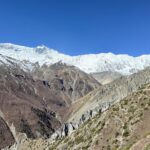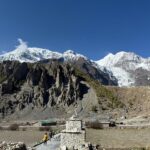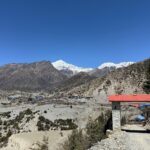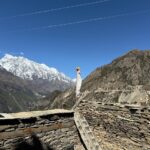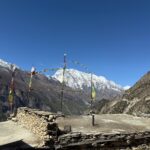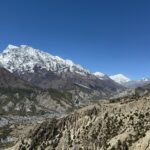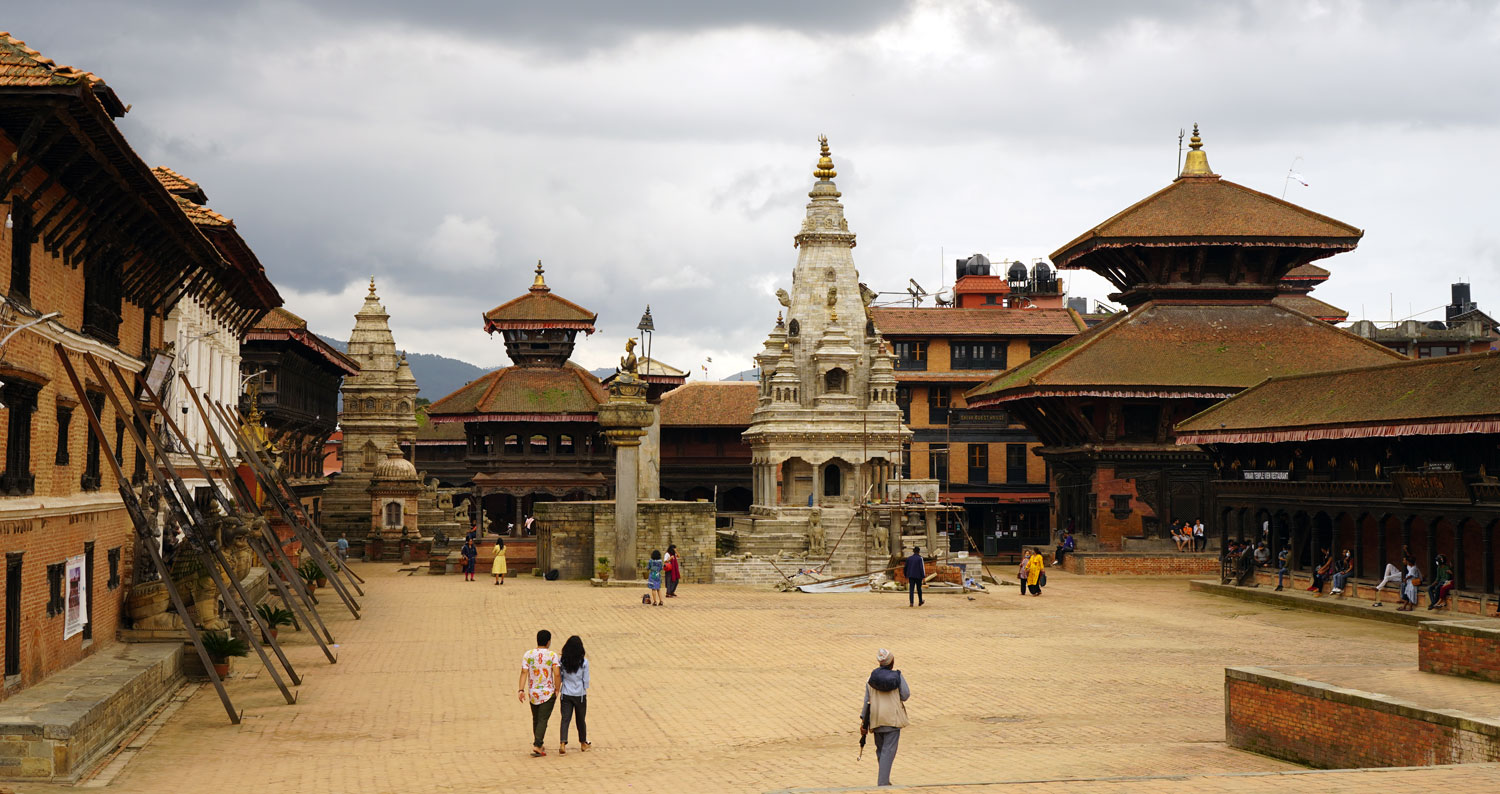
Bhaktapur Travel Guide
Discover Bhaktapur with our comprehensive travel guide. Explore its ancient temples, vibrant markets, and rich cultural heritage. Bhaktapur, known as a city of pilgrimage and religion, derives its name from “Bhakta” meaning devotees and “pur” meaning city. This is why it is called the city of devotees. At one time, the city had more temples and gods than houses and people.
Even today, this small Newa town preserves its ancient historical sites as they were centuries ago. Each monument and festival tells captivating stories, transporting you back to the eras in which they were established.
Historical records show that Bhaktapur dates back to as early as 865 AD. Isn’t that beautifully vintage? The settlements in the area evoke memories of ancient ways of life. Just 8 miles from Nepal’s bustling capital, Kathmandu, Bhaktapur offers a unique opportunity to experience rich Newa culture.
The Kathmandu Valley is rich in history and vibrant culture, especially with its old town and Newa settlements.
Sightseeing tour in Bhaktapur
Explore the captivating sights of Bhaktapur, a city renowned for its cultural heritage and lively traditions. Begin your journey at Bhaktapur Durbar Square, a UNESCO World Heritage site at the city’s core. This location boasts architectural marvels, including the magnificent 55-Window Palace, the exquisite Vatsala Temple, and the awe-inspiring Nyatapola Temple. This square showcases the rich heritage of Newari art and culture, offering a glimpse into the past.
Next, visit Taumadhi Square and marvel at the magnificent Nyatapola Temple. This impressive pagoda-style temple, constructed in 1702, symbolizes prosperity and devotion to Siddhi Lakshmi, the goddess of wealth. Then, head to Dattatreya Square to see the impressive Dattatreya Temple and a collection of beautifully crafted wooden windows and statues. One highlight is the famous Peacock Window, a stunning example of intricate Newari woodwork.
At Pottery Square, discover traditional pottery-making, where skilled artisans mold clay into exquisite pots, vases, and other captivating items. Try your hand at pottery-making and immerse yourself in this traditional craft. Savor authentic flavors of local Newari cuisine at traditional restaurants, enjoying delightful dishes such as Ju Ju Dhau (king curd), Bara (lentil pancakes), and Yomari (sweet dumplings).
Explore Bhaktapur’s rich cultural heritage through its impressive array of temples, including Bhairabnath Temple, Changu Narayan Temple, and the 55-Window Palace. Each landmark showcases distinct architectural styles and holds great historical importance. Plan your visit during one of Bhaktapur’s numerous festivals, such as Bisket Jatra, Gai Jatra, or Dashain, to witness lively performances of traditional music, dance, and rituals.
Stroll through vibrant local markets, offering traditional handicrafts, fresh local produce, and unique souvenirs, immersing yourself in the rich daily life and cultural experiences of the locals. Visit the National Art Gallery, the Brass and Bronze Museum, and the Woodcarving Museum to delve deeper into Bhaktapur’s artistic heritage.
Wrap up your day with a leisurely walk through the historic streets, where gently illuminated temples and serene squares provide a tranquil and contemplative atmosphere. Experience Bhaktapur’s rich cultural heritage on a captivating sightseeing tour, immersing yourself in its fascinating history, awe-inspiring art, and vibrant traditions.
Golden Gate in Bhaktapur Durbar Square
Witness the stunning Golden Gate in Bhaktapur Durbar Square, a magnificent structure near the impressive 55-Windowed Palace. This gate captures the attention of every visitor with its breathtaking beauty.
King Ranjit Malla, the last Malla king of Bhaktapur, constructed this impressive masterpiece in 1757 AD, marking his final contribution to Bhaktapur’s heritage. The Golden Gate, or Swarnadwar, showcases a harmonious fusion of various symbols, representations of deities, animals, and ancient architectural styles.
Simply observing this exquisite structure evokes thoughts of the intricate craftsmanship and boundless creativity of the past. Locals refer to the gate as Swarnadwar, meaning “golden gate” in Nepali. It also has other names like paladhvaka (gate of the gatekeeper) and nepaladhvaka (gate of Nepal).
The gate serves as a tribute to the Taleju Bhawani temple, located within the historic palace of Bhaktapur. Crafted in a pagoda roofing style, the gate was brought to life using a combination of bricks, mud mortar, stone, wood, and gold-gilded copper.
Artisans expertly blended various artistic elements, demonstrating their admiration for innovative design. Describing the gate in words cannot do justice to its intricacies. You must see it in person to fully appreciate its stunning beauty and intricate design.
Vatsala Durga Temple
The Vatsala Durga Temple stands as a symbol of beauty in Bhaktapur Durbar Square. Though it resembles the Krishna Mandir of Patan, it is dedicated to the powerful deity Durga, worshipped in the divine Sri Yantra form.
After the April 2015 earthquake, visitors could finally observe a Kalash, believed to represent Vatsala Durga, inside the temple. Before the earthquake, the temple remained locked, and people were unaware of what lay inside. In the past, worshippers could only admire the goddess from behind a locked door. Today, devotees can enter and worship her with great satisfaction.
The temple features nine pinnacles, with smaller ones housing images of goddesses on the first floor. Thus, calling the Vatsala Durga Temple the epitome of all temples is not incorrect. The majestic pair of lions and elephants adorning the entrance further enhance the temple’s exquisite beauty.
Experience the profound carvings firsthand as you run your fingers over them. In front of the temple, a noticeable bell emits a loud sound. According to legend, dogs become vocal and restless when it rings. The temple’s establishment dates back to 1721 A.D. when King Bhupatindra Malla undertook its renovation.
Historical records indicate that King Jagat Prakash Malla initiated the temple’s construction in 1672 AD, and King Jitamitra Malla completed it in 1674 AD. King Jitamitra Malla, son of King Jagat Prakash Malla, showcases the combined contributions of two Malla kings.
55 Window Palace
Right behind a golden masterpiece, the golden gate, you can find another majestic masterpiece. Of course within the durbar square. That master of the art is no other than 55 windowed palaces.
There, local persons also call these 55 windowed palaces, pachpannajhyale durbar. And in newari term nge nyapa jhya laaykoo. Consequently, this artistic fact holds back history from about 1427 AD. Before King Bhupatindra Malla remodelled it in the 17th century.
After succeeding originally constructed by king Yaksa Malla. Yes, this is also a fact. That it was just a building then when king Yaksha Malla concreted it. Later on, when King Bhupatindra Malla became the emperor of Bhaktapur in 1696, he started the reconstruction of this palace. But, it is said that it took a time of 58 years to complete.
The palace was finally set during the reign of King Ranjit Malla in 1754 AD. King Ranjit Malla, the son of King Bhupatindra Malla also contributed a lot to this palace. Unbearably, the tear downing earthquake of 1934 AD demolished the palace.
Despite that, the palace was remodelled, using the same windows and struts. But it was not in its usual shape. The palace once was also operated as the post office in Bhaktapur.
Meanwhile, one can observe the preeminent illustration of wood carvings of the Malla periods in this building. That somehow seems more attractive with black colouring. As you can observe, the first and second stories of the palace had a perfect reflection of wood carving.
The first story has doors alternating with small wood carved windows. And the second one is blessed with eleven deep carved windows in the front part. With a slanting torona over it. You can notice the carvings of asta bhairava with his shakti. Also, the carved sculptures of Lord Ganesha and Lord Kumar in those toronas.
Besides, the walls of the first floor utter a lot about the then ruling environment. Images, that reflect the social as well as the royal lifestyles of Malla kings. That includes the wall painting of King Bhupatindra Malla himself and queen vishwo Laxmi.
Along with that, there are images of the vishwo rupa of lord bhairava with his shakti. The battleground of Ramayan. Drawings of different deities and many more. While the interior part of this palace is closed for so many years.
You may not able to see those paintings. But, roaming around this palace won’t be a waste. You still can explore wood carvings and ancient architecture.
The Statue of King Bhupatindra Malla
The statue of King Bhupatindra Malla in Bhaktapur showcases remarkable metallic artistry. For a more in-depth experience and to examine the statue’s intricacies, visit the Taleju Bell (Tagou Ghan).
The artwork on King Bhupatindra Malla’s statue is exceptional. Positioned across from the iconic Golden Gate, it gazes north at Bhaktapur Durbar Square. This statue differs from typical depictions of kings, which usually highlight their courage. Instead, it exemplifies the ruler’s unwavering dedication to his revered god.
The statue depicts the king seated with crossed legs atop a pillar adorned with a snake (Naagaashan), lotus (Padmaashan), and lions at the four corners (Simhaashan). The sight of the king with joined hands and a bowing head is truly unique.
A mark on the statue’s leg commemorates the Battle of Bhaktapur, which occurred from November 10-12, 1769 A.D.
Bhairavanath Temple
The Bhairavanath Temple, a revered place of worship in Bhaktapur, stands at the heart of Taumadhi Square. Dedicated to Lord Bhairava, this rectangular-based temple is easily identified as it sits just behind the impressive Nyatapola Temple.
The Bhairava worshipped here is a powerful manifestation of Lord Shiva, also known as Kasi Vishwanath and Aakash Bhairava. He is renowned for his outspoken and determined nature.
Unfortunately, the temple collapsed during the devastating earthquake of 1934 AD. It was carefully reconstructed in the same format. The earthquake in April 2015 prompted another renovation, which also disrupted the small path through the Betal Temple leading to the inner section of the Bhairavanath Temple.
This temple has a rich history and an intriguing anecdote passed down through generations. According to this account, Lord Bhairava of Varanasi visited Bhaktapur to witness the Bisket Jatra, a significant event celebrated by the Newar community. During the festival, a priest identified Bhairava and cast a diversionary spell on him.
In his urgency to return to Varanasi, Bhairava began to descend into the ground. However, the priest refused to release him. With a swift and powerful strike, the priest severed Bhairava’s head from his body and grasped it in his hand. This is why some believe there is a discrepancy between the head and body of Kasi Vishwanath. They hold that the head remains highly valued and is kept in a box within the temple.
Explore Bhaktapur and its rich cultural heritage, where stories and history come alive through its revered temples and vibrant traditions.
Nyatapola Temple
Nyatapola is a magnificent five-storeyed ancient temple that fills the hearts of Bhaktapurians with immense pride. While many may have limited familiarity with Bhaktapur city, tucked within that wealth of information is a page dedicated to the captivating tales of Nyatapola.
The temple incorporates multiple elements, including 5 Ganesha statues, 5 tiers, 5 plinths, 33 steps, 108 struts, and 360 battens, all of which play a crucial role in tantrism and reflect the tantric influence of that era.
When discussing the Malla kings of Bhaktapur, one cannot overlook King Bhupatindra Malla. His statue gracefully stands in front of the Golden Gate of Durbar Square, fondly remembered as the exemplary King of Bhaktapur for his significant contributions to the art and architecture of the town. Nyatapola stands tall amidst them.
As you ascend the stone steps of Nyatapola, you may wonder about the stone images and what they represent. Five plinths, each adorned with a pair of stone images, create a harmonious symphony of art.
According to legend, these images are believed to be protectors of Goddess Siddhi Lakshmi. They feature a captivating array of figures, including wrestlers, elephants, lions, griffins, and two goddesses known as Sighini and Baghini. Each image is strategically positioned based on its unique strength. The wrestlers Jai and Pratap, known for their exceptional strength, are positioned below the elephants, which are ten times stronger than the wrestlers.
The primary deity worshipped at Nyatapola temple is Goddess Siddhi Lakshmi, a powerful tantric deity. Only select individuals, mainly priests, are permitted to enter this sacred temple and behold the deity, whose appearance remains a closely guarded secret.
Research reveals that the statue of Siddhi Lakshmi stands at a height of 9 feet, carved beautifully from black stone. The statue features a unique arrangement of 9 heads organized into three rows: the first row with five heads called Chandi Bhadrakali, the second with three heads called Pratyangira, and the central prominent head known as Siddhi Lakshmi. This impressive statue also boasts eighteen hands. Flanking the main statue are statues of Mahakal Bhairav and Masan Bhairav.
Dattatraya Temple
The Dattatraya temple in Nepal is a unique circular-styled shrine dedicated to Dattatreya, highly esteemed by devotees. Unlike the typical image of Dattatraya with three heads symbolizing Lord Shiva, Vishnu, and Brahma combined, this temple features three distinct images: Som, Durbasha, and Dutt on the left, middle, and right sides respectively.
Symbols such as Garuda, conch, and chakra adorn the temple’s pillars, signifying the importance of Lord Vishnu. Interestingly, festivals honoring Lord Shiva draw a larger crowd of devotees to this temple.
Annually, numerous followers from neighboring districts like Kathmandu, Lalitpur, and Kavre gather at the Dattatreya temple to worship Lord Shiva on Mondays in the month of Shrawan and Wednesdays in Poush. During Teej and Sila Charhe (Maha Shivaratri), devotees from across Nepal and even India express their devotion at Dattatreya temple before visiting Pashupatinath Temple.
The Dattatraya temple holds significant historical importance as one of Bhaktapur’s oldest and most prominent temples. According to historical records, King Yaksha Malla, ruler of Nepalmandal from 1428 A.D. to 1482 A.D., commissioned its construction in Nepal Sambat 590 (1470 A.D.), originally as a single-storeyed structure.
Accessible to the public in 1486 A.D. after King Yaksha Malla’s passing, the temple was later reconstructed by King Raya Malla in Nepal Sambat 615 (1495 A.D.), who enriched its architectural appeal with added stories. Additionally, the temple’s overhanging balcony, established by King Visva Malla in 1548 A.D., adds to its historical significance.
The temple also played a crucial role in 1769 A.D. when King Prithivi Narayan Shah’s capture of Kathmandu and Patan forced their kings, Jaya Prakash Malla and Narsimha Malla, into refuge, possibly within the Bhaktapur Palace Complex or specifically in the Dattatraya temple, although no specific documentation confirms their exact location within Bhaktapur.
Pottery Square
Pottery Square in Bhaktapur thrives as a lively center where the rich heritage of pottery-making continues. Situated near Bhaktapur Durbar Square, this area is renowned for its talented artisans who skillfully shape clay into beautiful pots, vases, and other intricate objects. Visitors can observe these skilled artisans practicing their craft, utilizing time-honored methods passed down for generations.
The square offers more than just craftsmanship; it immerses visitors in a cultural experience, allowing them to explore the vibrant artistic heritage of Bhaktapur. It’s a captivating visit, filled with the natural aroma of clay and the rhythmic sound of pottery wheels. Exploring Pottery Square provides a unique insight into the meticulous artistry that defines Bhaktapur’s rich cultural legacy.

